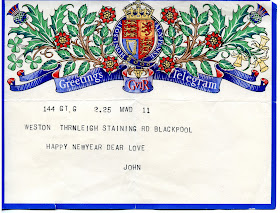 Sepia Saturday give bloggers an opportunity to share their family history and memories through photographs.
Sepia Saturday give bloggers an opportunity to share their family history and memories through photographs.There was so much to choose from in this week's prompt, but as I have never featured trains before, it is time now to take a trip from the Scottish Borders to North Yorkshire Moors, to Argyll in the west of Scotland, finishing in Austria.
In the village of Earlston in the Scottish Borders where I now live, the railway survived 100 years, opening in 1863 as part of the Berwickshire Railway. Following major flooding that hit the region in 1948, the station was closed to passenger
traffic, and the last freight service operated in 1965.
Photographs courtesy of the Auld Earlston Group
Three miles from my home is the major engineering feat on the Berwickshire Railway - Leaderfoot viaduct The
19 span bridge crosses
over the River Tweed, near Melrose. It was
built in 1863, with trains running until the line closed in 1965. The
structure is now in the care of Historic Scotland. A Roman bridge once crossed the Tweed here, conveying Dere Street north from the nearby fort of Trimontium.
 |
These photographs courtesy of my husband.
A visit to the National Railway Museum at York was also on the itinerary where our daughter enjoyed playing gymnastics on the giant wheels.
We happened to be on holiday at Taynuilt near Oban in the West of Scotland where there was a small station which one night hosted the luxury Royal Scotman on a tour of Scotland, We had a peep through the windows and saw tables being set for dinner - silver service of course1 We were most fascinated by the badges on the side of the train.
And finally to the Austrian Lakes and to the ""Road Trains" which a number of the towns have to transport visitors around. Fun for children and adults alike.
At Mondsee the train took visitors from the main car park into the town centre. Mondsee is probably most famous now as the location of the church used in "the Sound of Music" film for the wedding of Maria and Captain von Trapp.
This "train" in the spa town of Bad Ischl takes visitors round the town's attractions that include Kaiser Franz Joseph's summer retreat - the Kaiservilla. - where in 1914 he signed the order that plunged Austria into the conflict that became the First World War. Franz Lehar, composer of operetta's such as "The Merry Widow" also had a summer residence by the river. He was granted ho.honorary citizenship of the town and his music is remembered each year in a Lehar Festival.
Click HERE to find other blogger tales from this week's prompt.










%2BUS%2BNavy%2Buniform%2B-%2BCivil%2BWar.jpg)








































